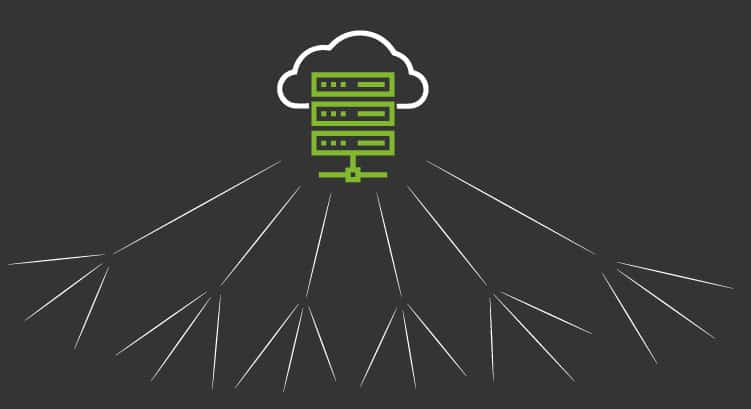What is edge computing? Why will we need it in the future?
What is edge computing? Do you really want to know? The story of edge computing reminds us how things used to be and how they will be in the future, similar but different.
Would you like to know more? This is not a story of passions or revenge, but of common sense. In the IT world, it is all about looking for the practical side of life.
But before we start, we should get to know where we are now, don’t you think?
What is edge computing? Current situation
Today, the cloud rules. As if it were a mob boss of the 1920s, it wanders through the neighborhood with sufficiency, knowing that nothing escapes its control.
A great deal of the computing services provided in the world today are carried out through that ethereal entity that is the cloud.
And the network changed everything, didn’t it?
If we take a look at the ’80s and ’90s, things were very different. Indeed, we already had computers that we used for many tasks, but since we didn’t have the Internet, everything remained at home. Our devices were responsible for executing all the computing tasks we needed to carry out, through their own computing power and the software they had installed. That was it.
The propagation of the network and the increase in the power of the connections came to change everything. Little by little, many services began to take shelter in the cloud.
When you check your e-mail, where do you think all the e-mails are stored? Where do you think the Excel files you share with your office colleagues are? And the photos with your grandmother in that Social Network? Well, they’re in the cloud, like so many things.
And what is the cloud? Well, simplifying it a lot, we could say that the cloud is a vast infrastructure, made up of thousands of networks and servers, thus carrying out all kinds of computing tasks to serve them to us in a tray through our beloved Internet.
Okay, this is the current situation. And what does edge computing have to do with all this?
What is edge computing?
Edge computing is, in a way, a return to the origins, without losing all the advantages that the Internet provides us.
In the immediate future, the Internet of Things (IoT) is expected to grow dramatically. The thing with the IoT is that its devices tend to be very basic and have very little computing capacity; in many cases they limit themselves to collecting data to send them over the Internet, so “in the cloud” computers – much more powerful – do all the computing work. But that’s about to change.
Edge computing, as its name suggests, aims to put computing on the “edge”; that is, it wants the computing tasks to be carried out by the IoT devices themselves.
But is it possible? The truth is that it will be, given the increase in computing capabilities in smaller devices, you may find this article helpful.
Why do we need edge computing?
As the use of this type of device becomes more frequent, so will the demand for data transmission. An increase as dramatic as the one predicted could saturate the lines, causing failures and slowing. And it’s true that 5G will increase key aspects such as bandwidth, but it may not be enough to cope with the amount of data transmission you’ll have to deal with.
Therefore, one solution could be to give IoT devices greater computing power, so that they can carry out part of their tasks autonomously, without relying on an Internet connection.
In addition, in certain situations, IoT devices will need to be self-sufficient and not depend on the capacity of the network connection to carry out their tasks. Edge computing will fight for it.
This, of course, does not mean that the cloud “disappears”, far from it, but that cloud computing and edge computing will coexist and collaborate, each doing their fair share of the work.
IoT monitoring
As new solutions, such as edge computing, emerge, the growth of IoT will bring challenges of a different nature, such as those involving the proper functioning of a large number of devices. The growth in their number, up to an amount that will be measured in tens of billions, will increase the need to control breakdowns, batteries, service levels, etc.
In that sense, technologies such as monitoring will be essential. Monitoring systems are responsible for monitoring technology (hardware, networks and communications, operating systems or applications, for example) in order to analyze its operation and performance, and to detect and warn about possible errors. And this leads us to Pandora FMS.
Pandora FMS is a flexible monitoring software, capable of monitoring devices, infrastructures, applications, services and business processes. It is also capable of monitoring IoT devices.
The best way to know Pandora FMS IoT monitoring is to ask the team that created it and improves it every day, don’t you think? You can do this in a very simple way, using the contact form found at the following address: https://pandorafms.com/contact/
Our Pandora FMS team will be happy to assist you!
Pandora FMS’s editorial team is made up of a group of writers and IT professionals with one thing in common: their passion for computer system monitoring. Pandora FMS’s editorial team is made up of a group of writers and IT professionals with one thing in common: their passion for computer system monitoring.
















